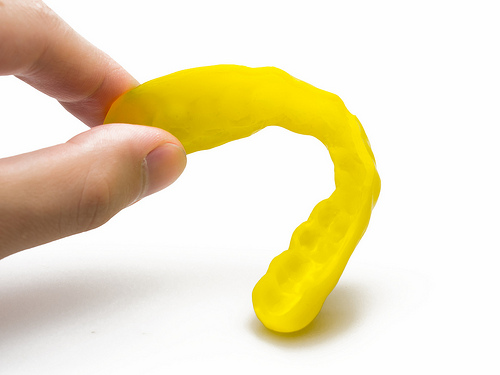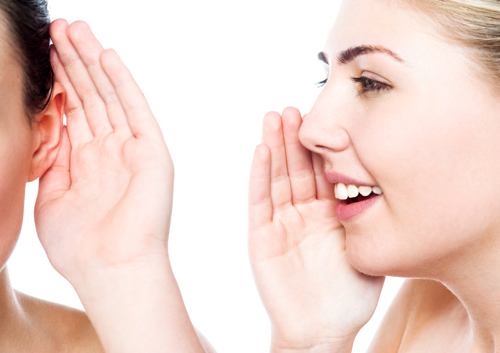April 3rd, 2024

It's springtime and it's again time to remind our patients at Seder Orthodontics to protect their faces and pearly whites while out on the field playing sports. According to the National Youth Sports Safety Foundation, children, high-school athletes and adults have more than 5,000,000 teeth knocked out in sporting events annually.
If you are planning on participating in spring sports, it’s imperative to have a proper-fitting mouthguard. Mouthguards can prevent chipped or broken teeth, lip and cheek injuries, jaw fractures, mouth lacerations and even concussions.
Having a mouthguard can make the difference between losing your teeth or not, and because many of our patients who play high school sports have jaws that are still growing, last year’s mouthguard may no longer fit as it should. Dr. Karen Seder and our team at Seder Orthodontics can fit you for a new guard.
To learn more about mouthguards or for general questions about your treatment at our Chicago, IL office, please give us a call!
March 27th, 2024

Proper mouth protection is recommended by Seder Orthodontics when you participate in any sports activities. If you wear braces, this protection becomes essential. Injuries to your mouth can not only damage your teeth, but your braces could break and cut open your lip.
Full Facial Guards
Full facial guards are often used in football and offer protection to your mouth from most injuries. Even with full facial protection, you may benefit from additional mouth protection. While your face is protected from outside impact, you could still suffer from cuts or damage to your braces from internal impact.
Mouthguards
Mouthguards referred to as boil-and-bites can be purchased at many retail stores. As the name implies, these guards are boiled in water to heat and soften the material. While the guard is still warm, you place it in your mouth and bite down gently. This causes the guard to form to the shape of your mouth. Unfortunately, these guards do not necessarily offer the best protection or fit.
Dr. Karen Seder can make custom mouthguards specifically for you. The custom fitting ensures you of better protection and a comfortable fit. Custom guards are also built in layers for durability. The American Dental Association recommends custom guards for orthodontic patients. Your mouthguard will be designed to provide proper protection for both your teeth and your braces.
No matter what type of sport you participate in, a mouthguard can protect your braces. Even an activity as seemingly harmless as table tennis can result in a contact injury. The Academy for Sports Dentistry states that a properly fitted mouthguard should not interfere with any athletic activity.
Seder Orthodontics will provide you with properly-fitting mouth protection to ensure the safety of your braces and your teeth. We will be glad to answer any questions you have so you can continue the activities you enjoy with little concern. If you do suffer any injuries to your mouth or braces during sporting activities, please contact us immediately. The sooner we can care for your mouth, the better the results will be.
March 20th, 2024

Dr. Karen Seder and our team hear this question a lot. Some of the common reasons for crooked teeth include:
- Thumb sucking
- Tongue thrusting or improper use of the tongue during speaking and swallowing
- Premature loss of baby teeth, which causes teeth to drift and shift
- Poor breathing airway caused by enlarged adenoids or tonsils
There are also hereditary factors we get from our parents, like:
- Extra teeth
- Large teeth
- Missing teeth
- Wide spaces between teeth
- Small jaws
Dr. Karen Seder and our team know that having crooked teeth isn’t just a cosmetic issue; it can lead to serious health problems as well. Crooked teeth can:
- Interfere with proper chewing
- Make keeping teeth clean more of a challenge, increasing the risk of tooth decay, cavities, and gingivitis
- Strain the teeth, jaws, and muscles, increasing the risk of breaking a tooth
There are several treatment options we offer at Seder Orthodontics that can help correct crooked teeth. Please give us a call at our convenient Chicago, IL office to learn more or to schedule an initial consultation.
March 6th, 2024

The stereotypical braces wearer – in middle school, with a mouth full of metal brackets – has led to numerous myths about orthodontics that discourage many people from getting the dental care they need. Dr. Karen Seder and our staff would like to put some of these myths to rest.
Myth 1: Orthodontic treatment is for kids. Although teenagers often visit the orthodontist to get braces, adults represent a growing proportion of orthodontic patients. Whether you’re eight or 80, a consultation with an orthodontist can identify problems with your teeth, jaws, or bite that can be corrected by orthodontic interventions.
Myth 2: Traditional, metal braces are my only option. Advances in orthodontic technology have rendered improved braces and other orthodontic appliances that are much less noticeable than the braces of yesteryear. Ask Dr. Karen Seder about Invisalign® braces and other options that make sense for your situation.
Myth 3: Orthodontic treatment is only helpful for crooked teeth. Sure, a crooked smile is a common reason that patients seek orthodontic care. However, orthodontic interventions help with a range of dental health problems. From missing teeth to overbite to jaw misalignment, your orthodontist can help with many problems associated with the teeth, gums, and jaws.
Myth 4: Orthodontic treatment is too expensive. As with any medical procedure, orthodontics can be pricey. However, our Chicago, IL team works with patients to find payment plans, insurance coverage, or other payment options that reduce the financial burden.





 Website Powered by Sesame 24-7™
Website Powered by Sesame 24-7™